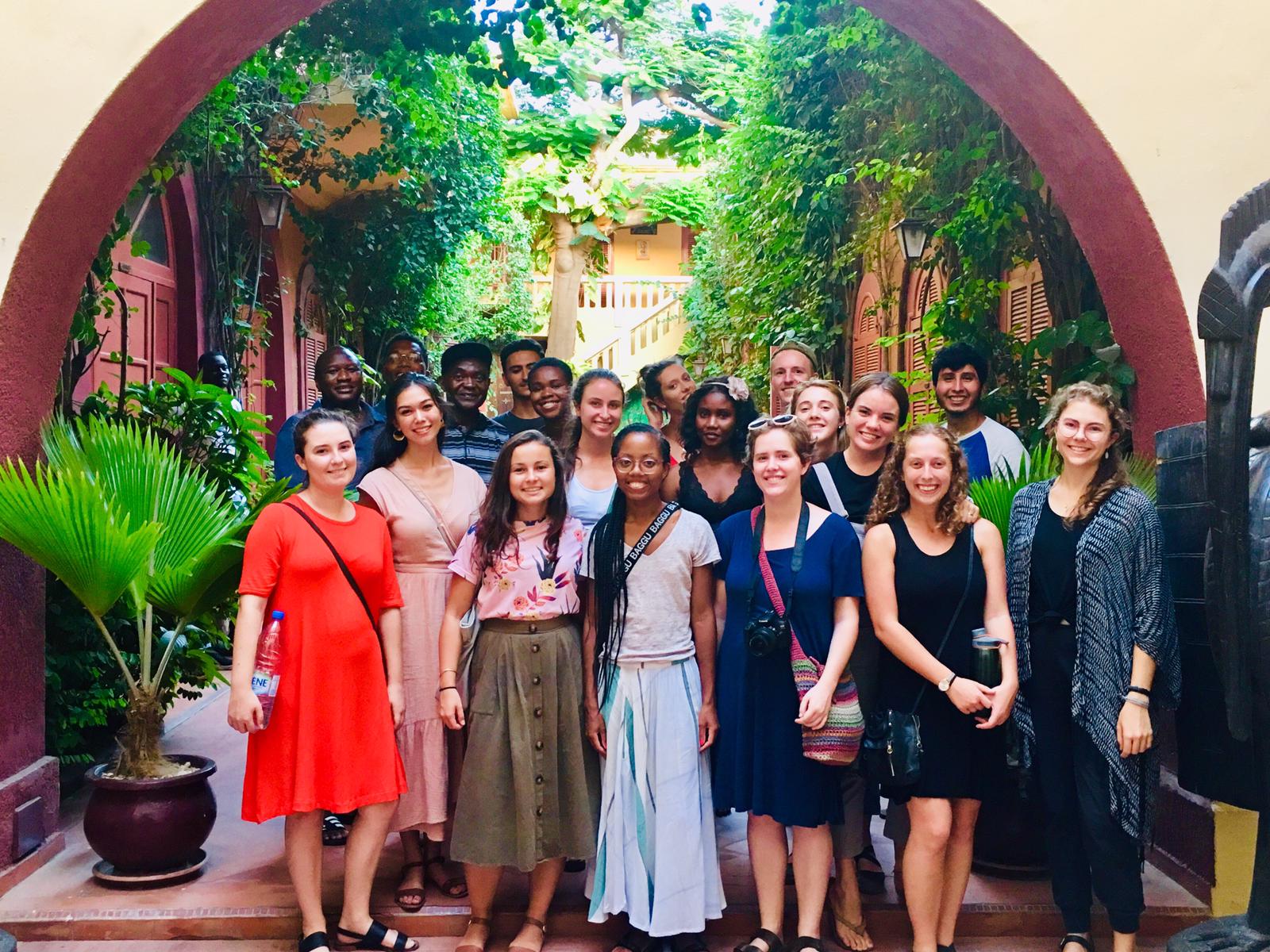A Visit To The Black Market
Last Wednesday, my stepmom took me to Naran Tuul, aka the black market. Although commonly called the "black market," its more of a huge outdoor flea market. Pre-1990, it actually was a black market, and despite its changing nature, the name stuck.
 Further to the left are deels, traditional unisex Mongolian clothing, worn for centuries by the nomads. You can buy one for only twenty dollars. An incense burner catches my eye, and Sarnai asks how much it costs. She grabs me by the arm and we walk away. I look at her quizzically. "Too much," she says, "I think he figured out you were white."
Further to the left are deels, traditional unisex Mongolian clothing, worn for centuries by the nomads. You can buy one for only twenty dollars. An incense burner catches my eye, and Sarnai asks how much it costs. She grabs me by the arm and we walk away. I look at her quizzically. "Too much," she says, "I think he figured out you were white."
Sarnai and I walk a few blocks before hopping onto a micro bound for Naran Tuul. These micros are the size of large minivans, yet somehow manage to fit twenty-some people (provided, without seat belts). We pass by Ulaanbaatar's central train station, where the city's name is written in large, visible letters.
A few days ago, Sarnai bought several Mongolian childrens' books. I tried reading some, where I found out that the word for 'red' was Ulaan, as in Ulaanbaatar. I had always assumed Ulaanbaatar was simply a name, and not that it necessarily translated into anything.
"What does Ulaanbaatar mean then?" I had asked.
"Red Hero."
My jaw dropped. Well, that was far more Communist than I had imagined.
The micro continues on, stopping periodically to allow people to get off as needed. We finally pull into the large parking lot in front of Naran Tuul. A tall green gate marks the entrance of the market. But before I even enter, sellers are advertising their goods – a market outside the market. We enter to immediately find rows and rows of belts on racks, mostly knockoffs of famous western brands. Sarnai looks at the Guccis, while I examine Diesel. "How much?" she asks. The vender replies. "Four dollars" she whispers to me. I take the Diesel.
We continue through the crowd, seeing just about everything: dresses, jeans, bras and underwear, and as we move toward the back... entire carpeting and tiling. Even further back, and I see horseback riding equipment and huge furniture. Moving toward the right, there are dozens of stalls selling shoes. Traditional Mongolian boots, made out of genuine leather, are only twenty dollars. Most of the venders are selling the exact same shoes too. When I look at a pair of flats, a woman tells me the price – 20,000 tugriks ($10). When I start walking away, she shouts that she'll give me it for 16,000 ($8).
"Does it look like it used to?" I ask Sarnai.
"When I used to sell dresses here? A little larger maybe, but pretty similar."
Along the outer edge are racks of sunglasses, where Sarnai buys fake Chanels. We walk toward the left of the entrance now, where we find jewelry, wallets, and Buddhist ritual items. We move closer to the back and vendors are selling bolts and bolts of traditional fabric. People buy fabric from here for cheap, then pay seamstresses to make them in the design that they like. The fabrics are beautiful, bright colors with vibrant patterns, and I wish I had brought my phone to photograph them.
 Further to the left are deels, traditional unisex Mongolian clothing, worn for centuries by the nomads. You can buy one for only twenty dollars. An incense burner catches my eye, and Sarnai asks how much it costs. She grabs me by the arm and we walk away. I look at her quizzically. "Too much," she says, "I think he figured out you were white."
Further to the left are deels, traditional unisex Mongolian clothing, worn for centuries by the nomads. You can buy one for only twenty dollars. An incense burner catches my eye, and Sarnai asks how much it costs. She grabs me by the arm and we walk away. I look at her quizzically. "Too much," she says, "I think he figured out you were white."
Earlier that morning, my family had explained exactly what I needed to wear to go to this market. Don't look like you have a lot of money, don't bring any bags, don't wear jewelry, wear a large hat and sunglasses. Don't let any vendors hear you speaking English. They decided that my dark hair was a benefit, but it was too bad that my skin was so light. I only brought 20,000 tugriks ($10), which I tucked into my front pocket, then pulled my sweatshirt over to cover. Naran Tuul is infamous for pickpockets and bag-slashers.
I left the market with a belt and two gifts for friends back home, all of which cost me $8.50.


Comments
Post a Comment